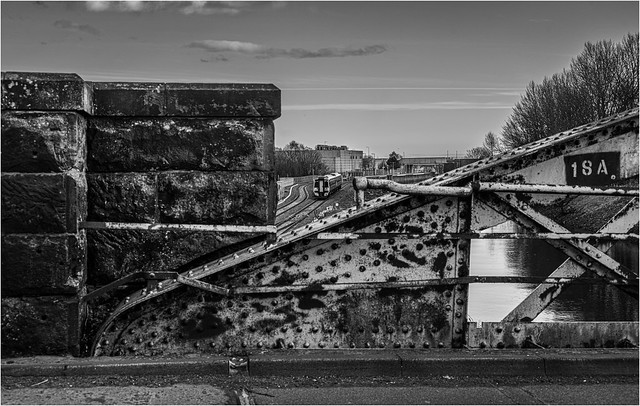I do agree that sometimes simply starting a 'service' is better than a trial. For example, I have been trying to get DRS to use the Georgemas nuclear terminal for general freight (as they promised when they built it back in 2012), but they keep wanting to demonstrate the terminal as a 'trial' - literally lifting one container off a Megafret in front of 'distinguished guests', and putting it back down again (after having to create a bespoke attachment for their crane, which "didn't need modification" apparently).
I'm pretty sure the business leaders know how a crane works, and indeed a train, so I'm not sure why DRS can't just approach customers directly; work out how many containers would make a viable intermodal; and try to fill a train each day...if an intermodal is even viable of course!
This of course doesn't obscure the fact that the terminal is totally unsuitable for general freight: it has the worst road access of the three 'corners' at Georgemas; plus a driver and shunter would have to stay with the train to move it for each container loaded/unloaded, as it's a fixed crane (increasing fuel and crew costs before we even start!). I fear the existence of that terminal will preclude a general freight service being started...
Terminal creation costs, I assume, are a big part of starting a service, so this is why it's great to see the hard-standing on the other side of the A9 at G'mas being used for timber. It might mean other flows can go from there in the future, simply using a reach-stacker for intermodals (like the old Safeway train)! But I digress...
I genuinely am not sure re. the timber trial. I do think that no matter how successful a service, it will need subsidised. It's the price we pay for taking freight off roads for longer distances, in my opinion (although this is not a long-haul sadly). Far more lucrative flows completely unrelated to timber, get grants every year just to run (as do flows via sea), because road is simply easier and cheaper. The UK has
chosen to make road easier and cheaper, in my view.
Having been organised by HITRANS initially (over many years), I wonder if this trial simply to convince the
Scottish Gvt. that timber can go by rail? I was under the impression that the raw product being moved was wind-blown and fallen timber, which would've been left to rot anyway. I heard rumors during the Kinbrace trial lineside-loading of the early 2000s, that the HGVs would empty the logs on the stockpile for the train; return to the forest; and take another load down to Inverness by road anyway(!) So, more timber was moved with fewer lorries, but it was hardly in the spirit of moving product by rail
instead of road

It shouldn't be a battle between road and rail. It should be a complete logistics solution of which rail is part, in my opinion, not 'them' and 'us'.
As has been said, I would like to see proper timber wagons involved, with tonnages well in excess of 700 per train if possible (there are rumours of an actual contract/flow in 2021, but using which company/wagons, I don't know).
Ideally, I'd like to see timber loaded at Georgemas from Caithness forests, then more logs loaded overnight from Sutherland forests as it heads South (at Altnabreac, Kinbrace and Lairg for instance). I agree that the more switches between modes, the less viable, but personally I don't see lorries being removed from the equation, getting the timber to the train. Judging by how much timber was stockpiled, I would actually assume that
each of those sites could produce a train of 700 tonnes per run. I also am doubting my previous calculation of 35t per BTA (based on the TOPS manifest, it was probably less than 30t in reality). I wouldn't even consider putting extra stanchions on the BTAs to haul more. Timber wagons need 'ends', in my opinion!

With sidings being built at Norbord, I would like to see timber travel by rail for longer distances (although, they're primarily creating sidings to get finished product out, planned as twice-daily 28-container trains...TnT as well, simply because there's no room to run 'round that length of train!)
I do think lorries
have to have a role getting timber to rail, but that these trains need to haul far more per trip. If each of these 3 trains/week was hauling 15 IWAs for example (
just fitting into the max. length of FNL trains I think), they'd be moving around 950 tonnes of timber each time,
if they could be loaded to their full 90t GLW without going above RA5 (which is perhaps not possible!) With trains being under 1400t in total, it would be within the capabilities of two '37s, but better still, a single '66. One driver, 2 shunters for loading/strapping, and a guy operating the lorry/crane. I think this would make a huge difference, despite lorries having to get to Georgemas.
But, investment would have to be made at sites like Altnabreac and Kinbrace, in terms of suitable hard-standing and lighting for overnight loading.
As an aside, the Branchliner idea was often mentioned operating in a 'Merry-Go-Round' style, where a single asset (ie. a trainload), moved around sites taking product to Norbord or farther South, on a rotating basis, depending on the felling times etc.
I hope this helps, and sorry for the long ramble.
Niall



